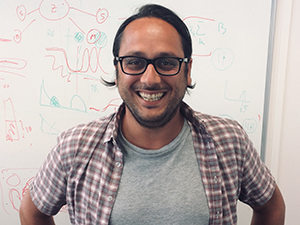Cell biologists have made a significant advance, uncovering the key role of an enzyme in determining the physical structure and behaviour of cancer cells, including how they spread.
The enzyme, called PKR-like ER kinase (PERK), helps coordinate the integrated stress response (ISR) pathway that cells use to adapt to a range of stressors. The ISR is a common feature of inflammatory conditions and metabolic diseases, such as diabetes.
When PERK does not function correctly, the cells are unable to respond sufficiently to stress, and they become invasive – a hallmark of cancer.
In the longer term, these findings could pave the way for novel therapeutic strategies that target PERK or other molecules involved in the ISR pathway. This research has the potential to benefit a broad patient population, as PERK’s activity can contribute to metastatic cancer, neurodegenerative diseases and diabetes.
The study, which was led by scientists at The Institute of Cancer Research, London, was made possible by multiple sources of funding, including the Cancer Research UK Programme Foundation Award and the Stand Up to Cancer campaign. The findings were published in the journal Cell Reports.
PERK’s role in controlling cell shape and movement
Cells can become stressed by a wide range of internal and external factors, including nutrient deficiency, temperature changes and infection. These and other stressors disrupt the normal functions of the cell, triggering the ISR pathway.
Scientists already knew that PERK temporarily reduces the manufacturing of new proteins to ease the cell’s workload. However, the new study revealed that PERK also has a crucial architectural role.
During times of stress, the cell’s endoplasmic reticulum (ER), a network of membranes that helps fold proteins and process fats, needs room to expand and reorganise to cope with the pressure. The researchers showed that as well as shutting down protein production, PERK loosens the ER’s physical attachments to internal scaffolding called microtubules. This allows the ER to spread out and regain balance.
Specifically, the team identified a specialised ER–microtubule scaffold involving several tethering proteins and a stabilising protein called CAMSAP2. Under normal conditions, PERK helps uncouple the ER from these scaffolds.
If PERK is unable to function, the ER’s attachments to the microtubules become too strong, CAMSAP2 levels rise and the ER collapses inwards, becoming tangled and tense. This not only changes the shape of the cell – making it more stretched and pointed – but also puts it in a more aggressive, invasive state.
Therefore, in normal cells, PERK acts as a tumour suppressor. Conversely, in cancerous cells, the cell shape changes induced by PERK allow tumours to grow, spread and resist treatment.
This new understanding of PERK’s role in controlling cell shape and movement opens new research avenues into cancer cell invasion and diseases driven by ER stress. In the longer term, it could pave the way for new treatments that target PERK in conditions where these features of the cell are disrupted – such as in metastatic cancers. For patients, this may eventually lead to treatments that slow the spread of aggressive tumours.
PERK and the link between cancer and diabetes
People with diabetes have an increased risk of cancer, particularly breast, colorectal, endometrial, bladder, liver and pancreatic cancer. The mechanisms responsible for this association are not fully clear, but scientists believe that the shared risk factors between the diseases – which include inflammation – have a part to play.
Inflammation can activate the ISR, triggering PERK to initiate stress-relieving changes in cell shape. However, the incorrect, excessive or chronic activation of this pathway can start to lead cells to become cancerous.
More research is needed to create the full picture of how PERK works in different biological settings. Fortunately, the researchers behind the new study are already planning their next step, which involves using animal models of cancer to confirm their findings in more complex systems.
At the same time, they are working on using AI-powered imaging to help them visualise stress and structural instability in cells. If they can achieve this, they should be able to identify particular cells or even patient groups that will be most sensitive to treatments that disrupt PERK signalling or target the cell’s microtubules.
Targeting the ISR could benefit millions of people
Professor Chris Bakal, Group Leader of the Dynamical Cell Systems Group at The Institute of Cancer Research (ICR), said:
“We are pleased to have uncovered a completely new role for PERK in coordinating the stress response with cell shape. This provides a possible explanation as to how conditions where the stress response is activated could potentially support or drive cancer.
“Our findings also present new opportunities to stop the shape changes that drive metastatic cancer by targeting the ISR or metabolic pathways. This is a totally new way to think about stopping the spread of cancer cells.
“Given PERK’s involvement in multiple diseases, millions of cancer patients worldwide – particularly those with aggressive, invasive tumours – could stand to gain from therapies that target the ISR.
“In parallel, individuals with neurodegenerative disorders like Alzheimer’s or ALS, where ER stress and cytoskeletal disruption are known contributors to disease progression, may also benefit from these approaches.”
Image credit: Jason Taix from Pixabay, 2014
.tmb-propic-md.jpg?Culture=en&sfvrsn=c25d2b2f_9)
 .
.
